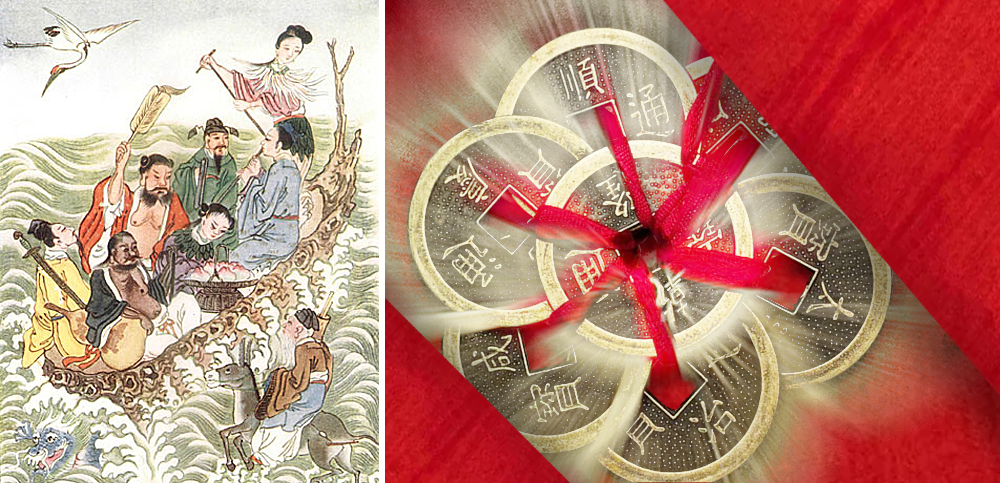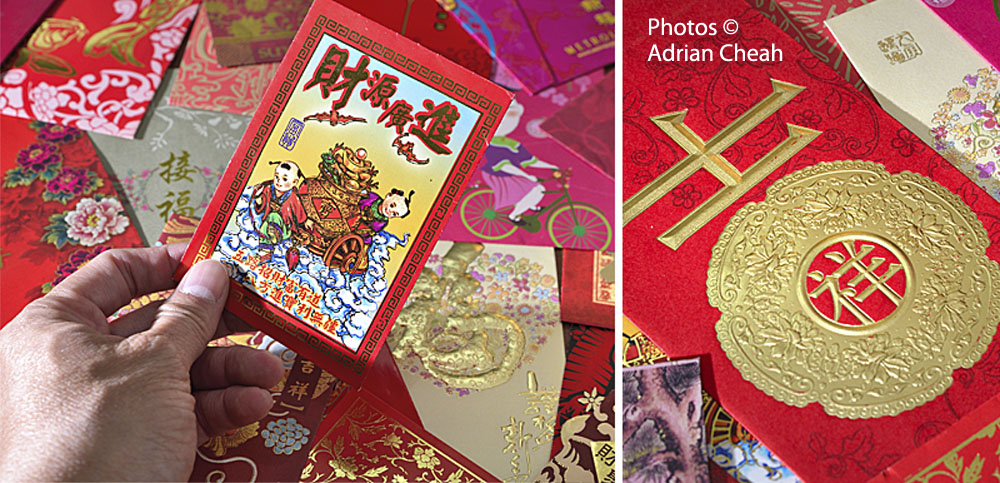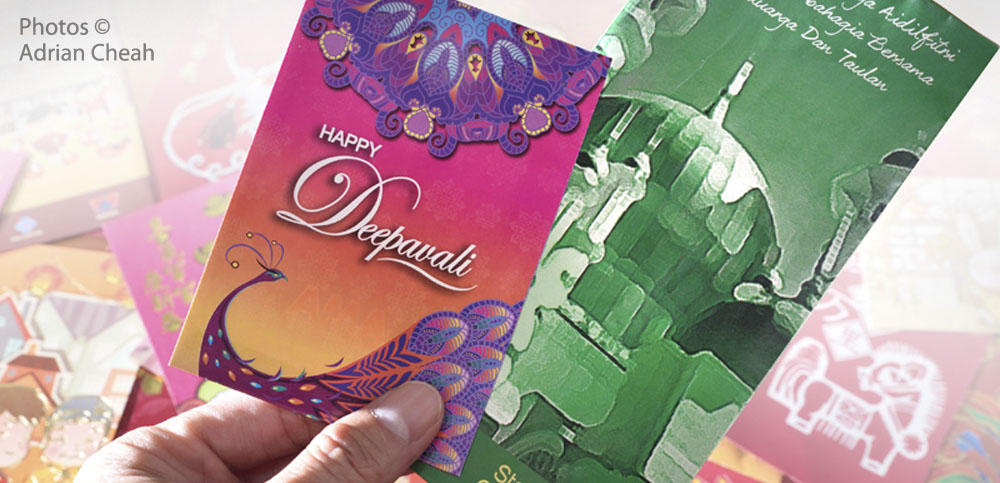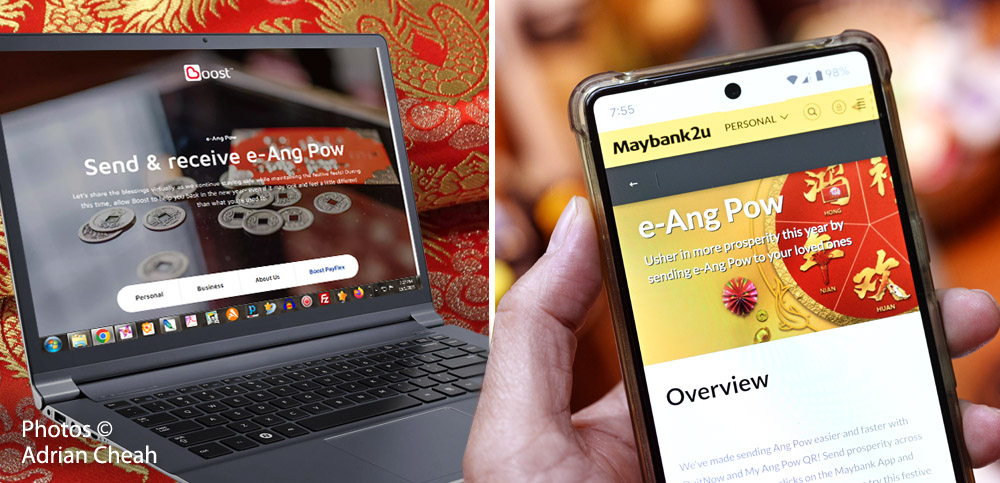Ang pow, a red packet of prosperity and blessings

More than just a monetary gift, the ang pow (or ang bao) is a cultural symbol wrapped in a red envelope, a gesture of goodwill and blessings. Traditionally given during Chinese New Year, birthdays, weddings and other festive occasions, the red packet carries deep meaning and continues to hold significance today.


Money-giving knows no boundaries. In the West, cash might be slipped into a birthday card with little thought to its packaging, but for the Chinese, the ang pow is far more than just a way to hand over cash. It is an auspicious gesture encased in a red envelope decorated with lucky symbols, characters for abundance, or deities representing fortune and longevity. Red is the colour of prosperity and auspiciousness, believed to have the power to ward off evil spirits. So, it is not just about the money – it is about the good vibes and blessings that come with it.
The design of ang pows is not just for show – each motif carries meaning. Every year, graphic designers outdo themselves with intricate depictions: carps swimming in lotus-filled ponds, phoenixes and dragons in mythical harmony, Chinese zodiac animals striking their best poses, and, of course, the revered trio of immortals (Fu Lu Shou). Not to mention ancient gold ingots, which are synonymous with wealth. All the imagery is carefully chosen to convey good health, happiness and prosperity. Trust me, no one is getting an ang pow that is a plain red envelope!

Watch out! White envelopes are a big no-no for gifting at festive occasions. White is reserved for funerals, known as pek kim and is used to help grieving families with funeral expenses. Mixing this with festive occasions? Well, that is just a cultural faux pas of epic proportions!
The Origins of Ya Sui Qian (压岁钱)
There are two legendary stories in Chinese culture that explain the origins of the beloved ang pow tradition.

Left: The Eight Immortals crossing the sea, from Myths and Legends of China. (en.wikipedia.org)
The first tale involves the Eight Immortals – well-known figures in Chinese folklore –who, in a bid to help a poor elderly couple, transformed into coins to save their son from a demon named Sui. On Chinese New Year’s Eve, these eight coins were wrapped in red paper and placed under the child’s pillow to ward off the evil spirit. Over time, this custom evolved and parents began giving money wrapped in red paper to their children, which became known as "ya sui qian", or “money to suppress the demon". Though today, we understand it simply as “money given to children by their elders", it still carries the essence of protection and blessings.
The second story takes us back to the Tang Dynasty, where the emperor’s son was born and gold and silver coins were presented as protective charms. This practice spread to the people and before long, parents were gifting money to their own children, believing it would ensure "protection", as well as good health and longevity.
(According to the National Library Board, Singapore)
How much to give?

With its roots deeply embedded in ancient legends and cultural symbolism, the practice of giving ang pows continues to evolve in modern society. However, the thoughtful gesture behind it remains unchanged. Though the amount is up to your generosity, there are lucky figures to consider. Numbers ending in 8 (such as 88 or 888) are lucky, associated with wealth and prosperity. Similarly, 9 (like 99 or 999) are preferred for their phonetic similarity to the word for longevity. But avoid the number 4 – as it sounds like "death". Remember, in Chinese culture, even numbers are considered auspicious, as “good things come in pairs". Some even go the extra mile and top up figures to represent overflowing abundance, like 11 or 101, symbolising never-ending wealth.
It is customary to use fresh and uncirculated banknotes, following the tradition of getting rid of the old and preparing a clean slate for the new year.
When are ang pows given?

15 days of the Chinese New Year
Traditionally, during the 15 days of Chinese New Year, ang pows are handed out by married couples to children, teenagers and unmarried adults. These lucky souls will continue to receive them until they tie the knot. As for me, my run of receiving ang pows ended abruptly in 1999 – the day I was Adrian the bachelor no more. Since then, my role shifted to the giver. Once I started earning, I took it upon myself to return the favor by giving ang pows to my parents. Watching my daughter eagerly anticipate her own ang pows reminds me that this cycle of giving and receiving not only strengthens family bonds but also connects us to a cultural tradition passed down through generations.
Mua Guek (baby's first "full moon"), birthdays and weddings

In Penang, when a newborn celebrates Mua Guek, it is customary for parents to distribute gift boxes to well-wishers. These boxes usually contain nasi kunyit (turmeric glutinous rice) with thick curry chicken, hard-boiled eggs dyed red and ang ku (red tortoise cakes). The shape of the ang ku signifies the baby’s gender – tortoise-shaped for girls and round-shaped ang yee for boys. In the good old days, these items were lovingly prepared at home, but now one can order them from a shop, making life much easier. Some well-wishers may choose alternatives like a cake, a Kentucky Fried Chicken voucher, or an Ayamas full moon gift pack. Of course, it is still customary to return the gesture with an ang pow to the proud parents.

In the Chinese community, the tradition of giving ang pows extends beyond Chinese New Year and Mua Guek. It is common to present ang pows during weddings and birthdays, with recipients free to decide how best to utilise the gifted money.
Interestingly, during significant birthday celebrations, particularly milestone occasions like an 80th birthday, some elderly individuals not only receive ang pows but also take the opportunity to distribute them to the younger generation. This practice reflects a reciprocal exchange of good wishes and blessings, fostering a generational bond within the community.
Gratuity
In some Chinese communities, sinsehs (traditional Chinese medicine practitioners) are often given ang pows as payment, instead of cash. This is because it is considered inauspicious for them to accept cash upfront. The belief is that it might invite misfortune or bad luck. A similar custom applies to mediums who channel spirits – while the payment may be money, offering it in an ang pow is seen as a more symbolic gesture. The offering of an ang pow, even though it contains money, is viewed as a voluntary and symbolic gesture, free of contractual obligations. This practice is rooted in cultural and superstitious beliefs, where the exchange of services is intertwined with traditional customs that emphasise goodwill and spiritual harmony.
Feng Shui
For those into feng shui, placing an ang pow containing "gold coins" tied with a red thread in the northern sector of the house is believed to attract good fortune. If you spot this in a friend’s home, you will know they are focused on inviting positive energy and prosperity into their living space.
Other cultures

In Malaysia, the tradition of giving ang pows has transcended its Chinese roots. Malaysians of various backgrounds now participate in this exchange, with Muslims offering green envelopes during Syawal and Hindus distributing colourful packets during Deepavali, making ang pows a symbol of goodwill across cultural divides.
Ang pow envelopes are readily available for free from banks, jewellers, hotels and shops during festive seasons. Alternatively, you can buy them online or at stationery stores.

While the digital age has introduced a new dimension to giving, with virtual ang pows now being sent through apps, it is reassuring to see that the essence of the tradition – offering blessings of prosperity – remains intact. The tradition of giving ang pows, whether in its physical or digital form, continues to be a powerful symbol of community, prosperity and the love that binds generations together.
---------------------------------------------------------
Written and photographed by Adrian Cheah
© All rights reserved
17 August 2017